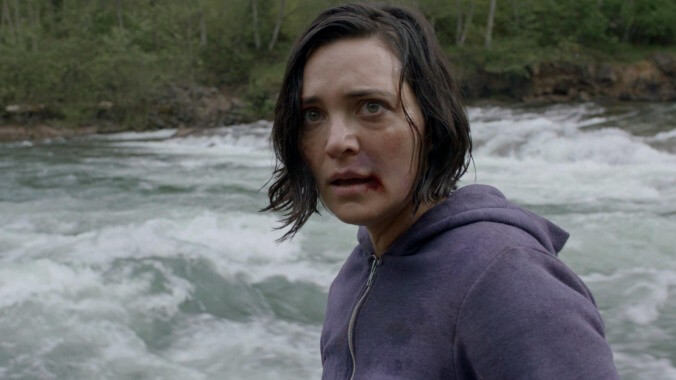Alone is a lean, mean thrill machine from the director of Universal Soldier: Day Of Reckoning

Note: The writer of this review watched Alone from home on a digital screener. Before making the decision to see it—or any other film—in a movie theater, please consider the health risks involved. Here’s an interview on the matter with scientific experts.
That John Hyams’ lean thriller Alone is largely destined for home viewing is unfortunate. Though he has spent most the last few years working in TV, the director of the awesomely psychotronic Universal Soldier sequels Universal Soldier: Regeneration and Universal Soldier: Day Of Reckoning has a gift for widescreen composition and sound design that begs for the theatrical experience, offering a healthy antidote to the sort of Hollywood megaspectacle that until recently was a guaranteed way to put butts into multiplex seats. If Regeneration and Day Of Reckoning were improbable mutant artworks of cult-movie iconography and bone-crunching combat, his new film is an exercise of unpretentious formal chops, with a first act that presents a catalog of minimalist atmospherics and bad omens: creepy engine noises, eerie Pacific Northwest roads, and a Jeep Grand Cherokee that follows its protagonist, Jessica (Jules Willcox), in the manner of the demonic tanker truck from Duel.
Jessica is introduced to us as she is about to leave Portland in the aftermath of a vague tragic backstory, with a U-Haul trailer hitched to her old Volvo station wagon. For most of the running time, she and the Cherokee’s nameless driver (Marc Menchaca) are the only two characters. His motives are as plain as the vintage-serial-killer glasses and mustache on his face. Even the sling around his arm comes straight from the Ted Bundy playbook. It’s pure cliché, but the sparseness of the storytelling helps elevate the film above its über-generic logline and bland title. (According to IMDB, it’s one of at least four Alones completed in 2020; three are backwoods thrillers, and at least one shares the premise of traumatized heroine, a kidnapping, and an escape from a cabin with this movie.)
Hyams has previously displayed a fondness for mysterious characters and unfamiliar, deserted backdrops, and he understands that sometimes the most effective way to use the frame is to fill as little of it as possible and let the resultant negative space work its magic. The man in the Grand Cherokee keeps popping up in all the wrong places, radiating big doses of stranger danger. Following the inevitable abduction, he locks Jessica into the cellar of an isolated cabin. The subject matter is exploitation-grade, but the possibility that Alone might sink into sadistic, tooth-gnashing torture porn is quickly dispelled. Jessica escapes barefoot into the woods, and the movie morphs into a survival thriller, complete with a gnarly injury and a muddy mano a mano showdown that befits Hyams’ action background.
Compared to the Universal Soldier films, which cast assorted direct-to-video action stars into horror-influenced, art-film-quoting meditations on memory and identity, Alone is anything but thematically ambitious. It follows the trends of contemporary thrillers and horror movies, which have largely replaced the queasy, unplaceable psychic dimensions of their forebears with therapy narratives that suggest that those who can no longer afford a few hours a week on a couch should consider being kidnapped, haunted, or menaced by a shark. But given that most genre movies are copycats, style can be an effective substitute for substance. The unease created here is disquietingly efficient in its best moments, getting plenty of mileage out of classically suspenseful backdrops: boxy cars driving along winding roads, a creaky cabin, and a woman fleeing a killer in the woods.
The necessity of shooting handheld in a rugged forest (at least on a low-budget project like this) occasionally hampers the climactic stretch of Alone; simply put, it can’t match the controlled compositions of the movie’s terrifically executed first half-hour. Nonetheless, there’s something deeply appealing about an already stripped-down cat-and-mouse scenario that becomes dirtier and more elemental as it goes along, tracing a devolutionary arc from the rules of the road to primeval combat. As in so many thrillers, there’s an implication of primitive threats lurking under the mundane, most memorably exemplified by a tense sequence in which Jessica’s abductor carefully slices a piece of cheese with a hunting knife—an image that could just as well be a metaphor for the skillful direction of this back-to-basics project.